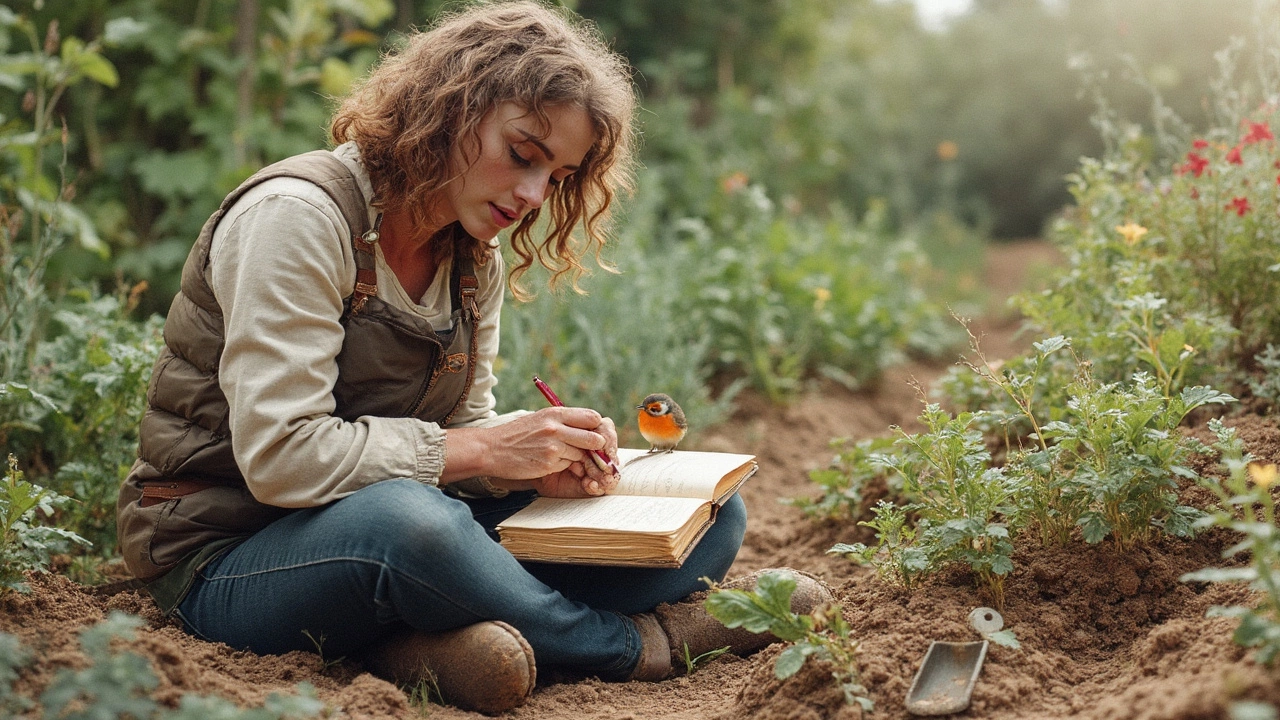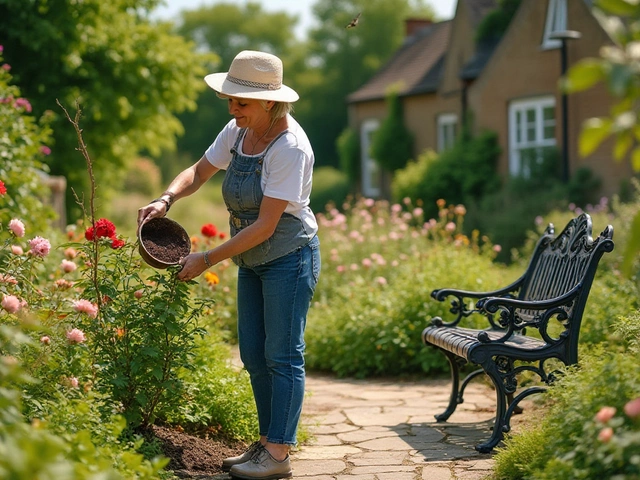Alright, so you're planning to dig your hands into gardening, but suddenly, you're stumbling upon a world of challenges you'd never expected. Sound familiar? You're not alone. For many, understanding what makes soil tick is like trying to learn a new language. You're eager to plant those veggies, but wait, is your soil sandy, clay, or the elusive loam? Know your dirt—it'll make or break your garden dreams.
Then, just when you think you're getting the hang of this gardening thing, along come the pests. Those little munchers have a knack for showing up at the worst times, like uninvited guests at a garden party. Learning to deal with them without going overboard on chemicals can be tricky, but it's doable.
And let’s not even start on the weather! One day, you’ve got sun, the next a downpour. Welcome to nature’s rollercoaster. Gardening teaches adaptability, and sometimes a little heartbreak. But remember, mastering these elements brings you closer to that flourishing garden of your dreams.
Understanding Your Soil
Diving into the world of gardening, one of the first hurdles you might face is getting to know your soil. It’s the foundation of your garden, and knowing what kind you're dealing with can save you loads of trouble. Let's break it down: soil usually falls into categories like sandy, clay, and loam. Each type has its quirks and benefits.
Sandy soil drains fast, which is great if you're worried about soggy roots, but it also means nutrients wash away more quickly. On the other hand, clay soil holds nutrients well but can get waterlogged and compacted, making it tough for roots to push through. Finally, there's loam, the holy grail of gardening soils. It’s a balanced mix of sand, silt, and clay that holds moisture while letting excess drain away.
So, how do you figure out what you've got? A simple DIY test can help. Grab a handful of soil, add a little water, and try rolling it into a ball. Sandy soil won’t hold its shape well, clay will be sticky and stay in a ball, while loam will feel just right—pliable but firm.
- For sandy soil, consider adding organic matter like compost or aged manure to help it retain water and nutrients.
- If you've got clay, aerate it with gypsum or organic matter to improve drainage and prevent it from becoming too compact.
- Lucky enough to have loam? You’ve hit the jackpot, but still, enrich it with organic matter to keep it fertile.
Knowing the type of soil you have isn’t just about proper plant growth—it's about making gardening a breeze. Understanding soil amendments and when to use them can make a world of difference, helping you tackle many gardening challenges before they start.
| Soil Type | Characteristics | Amendments |
|---|---|---|
| Sandy | Quick drainage, poor nutrient retention | Compost, organic matter |
| Clay | High nutrient retention, poor drainage | Gypsum, organic matter |
| Loam | Balanced, optimal drainage and retention | Regular composting |
Battling Garden Pests
Dealing with garden pests can feel like you're in a never-ending tug-of-war with nature. Just when your plants are looking their best, along come those relentless bugs to throw a spanner in the works. The key here is vigilance. Keep an eye on your plants and learn the warning signs of an invasion.
First off, identify who your enemies are. Are aphids munching on your roses? Maybe caterpillars are having a feast on your veggies. Knowing your pests is half the battle won. For instance, aphids tend to gather on new growth and they seem to love roses and beans.
Once you've figured out who's causing the trouble, it's time to take action. Here are some go-to methods:
- Hand-picking: This is oddly therapeutic and works well for larger pests like caterpillars. Just pop them into a bucket of soapy water.
- Natural enemies: Let nature help you out. Ladybugs, for example, are voracious aphid eaters. Encourage them to hang around with plants like dill or fennel.
- Splash with water: A strong spray of water can knock aphids off plants, giving them a tough time returning.
- Homemade sprays: You can make a garlic or chili spray that pests find quite unpleasant, and it's all natural.
Remember, balance is key. Don't aim to annihilate all bugs, as some, like the bees and ladybugs, are your allies in the garden. The goal is to keep the balance, making sure those nasty critters don’t overstay their welcome.

Weather Woes
Weather can be a gardener's best friend or a surprising adversary. You might start your day with a warm morning sun only to find dark clouds rolling in by noon. Such is the thrill of gardening! Dealing with unpredictable weather is part of the journey.
Let's chat about how to tackle these gardening challenges head-on. First off, knowing your local climate is a smart move. Use a reliable weather app to track forecasts. It's helpful to plan your gardening tasks around predicted rain and sunny spells. If a heatwave is on the horizon, make sure your plants get plenty of water early in the day to prevent the scorching sun from wilting your hard work.
During cooler months, unexpected frost can damage many plants. You may want to invest in some lightweight frost covers to protect fragile veggies and flowers overnight. Also, don't forget to mulch! A well-mulched garden retains moisture and protects plant roots from drastic temperature changes.
Now, if your local weather swings wildly, consider building a simple DIY greenhouse. It doesn’t have to be fancy, just functional. This allows you to control the environment and continue growing those tender plants even when nature decides to throw a curveball your way.
- Tip: Always have a stash of seeds or seedlings. Not everything survives when the weather acts up, and it's wise to be prepared to replant as needed.
- Tip: Pick resilient plant varieties. Some plants handle the highs and lows of weather better than others. Do a little research and choose wisely.
Gardening isn't just about soil and seeds; it's a partnership with nature's whims. By embracing and adapting to the ever-changing skies, you're not only enhancing your garden but also building resilience and learning lifelong gardening struggles and solutions.
Time and Consistency
If you've ever tried your hand at gardening, you'll quickly notice that the ticking clock is both friend and foe. Finding the right balance between too much and too little attention to your beloved plants is crucial. Consistency is your best buddy here. Keep a steady routine for watering, pruning, and looking out for those pesky pests.
In the hustle and bustle of modern life, setting aside gardening time can seem challenging. But fear not! Aiming for just a few minutes a day can keep those greens thriving. Think of it as a much-needed pause from everyday chaos. And believe me, plants love regular care.
As horticulturalist Michael Pollan once said,
"A garden requires patient labor and attention. Plants do not grow merely to satisfy ambitions or to fulfill good intentions. They thrive because someone expended effort on them."
Now, it's no secret that keeping up with a regular schedule is easier said than done. But to make it simpler:
- Set reminders on your phone so you don't miss watering days.
- Make a gardening calendar to track planting and harvesting times.
- Keep your tools handy, so you're ready whenever you can sneak a moment outside.
Hot tip: Choose plants that match your routine and local climate. If you're a beginner, hearty ones like succulents might match your lifestyle.
For those keen on stats, it's interesting to note that a survey by the Royal Horticultural Society found that gardeners who spent 30 minutes a day in their garden reported higher levels of happiness and reduced stress. Now that's some motivation to stick to your schedule!






